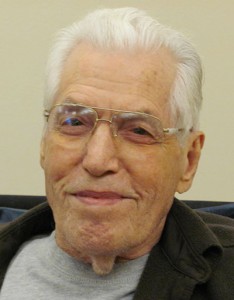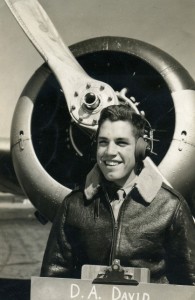
Colonel Don David
By Don Murtha
Silverton native Don David had one of the most dangerous missions of World War II – flying The Hump over the Himalayan Mountains from India to China.
The Hump was the name given by American pilots to the route from Assam in Northern India to Kunming, China. It was a supply route supporting the Chinese Army in the war against Japan.
The Japanese Army had cut off all land approaches to China, primarily from Burma over what the Allies termed the Burma Road.
That left only one viable supply route – the air. The Air Transport Command was formed to establish the route from India to China.
But it wasn’t simple. There were no charts, the mountains reached heights of 16,000 feet in places, and the route was subject to harsh weather and severe turbulence.
Flying The Hump covered one of the most challenging routes in the world.
Most available aircraft were not suited to the high altitude operations and heavy payloads. In addition, pilots faced flying over the mountains and through deep gorges.
David’s turn to face the challenge came when he was with the 1332 Air Group of the 14th Air Force in the China-Burma-India Theater, the backwater of World War II.
He arrived on duty in India in early 1945, after being commissioned as a lieutenant. He was assigned to Mohanbari Air Base near the city of Chabua in the state of Assam.
He flew a C-46 Commando; it was an improvement on other planes that had been flying The Hump. The C-46 could fly faster and higher than any other cargo plane of the time.

“It was larger, too. We could carry more than other planes,” David said “That meant a lot in flying over the high mountains where the first ridge was on the order of 13,000 feet.”
“We hauled every thing – arms and ammunition, gasoline, food, cigarettes, medical supplies – anything that was critical,” David said.
‘’We could even haul a jeep, if we had to, but it took something to get it aboard the plane.”
There were environmental challenges on the ground, too. Assam was such a dusty city that mechanics had trouble keeping the engines running clear.
“They finally found that they could use Kotex (a sanitary napkin) for engine filters,” David recalled.
Weather was a constant problem.
Mechanics had to work under tarpaulins during the monsoon rains and during the summer season the sun was so intense men were burned by the heat coming off of the metal plane surfaces.
In addition to other hazards of The Hump, there were attacks by Japanese fighters.
But the losses from Japanese fighter attacks and bombing and strafing of American bases occurred prior to David’s tour.
He never came under attack by the Japanese because by the time he arrived in India, American fighter pilot forces had been built up.
“If the Japanese presented a problem, our forces took care of them,” David said.
The flight from David’s base at Mohanbari to Kunming, China was 500 miles and took about three hours. Many pilots would make up to three round-trips in a day
“I flew The Hump 32 times,” David said. “I never crashed.”
Other pilots were not so lucky.
“Many crashed and a few were rescued or walked out,” he said.
The actual figures from the time report 1,314 crew and passengers killed and 1,200 rescued or able to walk back to base.
Gen. William Tunner, who commanded the Air Transport Command, said The Hump was the greatest airlift until the Berlin Airlift of 1949.
Gen. Tunner said The Hump demonstrated “we can fly anything, anywhere, anytime.”
David graduated from Silverton High School in 1942.
“Fifteen guys in my class were pilots during the war and not a single one was killed,” David said.
“Ted Demwzas was the only one who flew in combat, and he was shot down over Burma. But he was recovered after the war,” David said.
When the war ended, there were celebrations all over the world.
“But I was on a flight from Kunming and didn’t get in on the original hoopla.” David said. “When I landed they were shooting off flare guns all over. What a time.”
“I got out of the Air Force for a short time after the war, but I went back in,” he said.
For the rest of his Air Force career he was in Air Rescue Service recovering downed aircrews.
During World War II, David met and married his wife, Doris. She died in 2012. They were married 67 years. and have two daughters, Robin Fewell of Silverton and Jacquelyn Moseley of Oregon City
During David’s stint in the Air Force they lived in California, Nevada, Florida, Virginia, Germany, and Turkey. He retired as a full colonel.
Then they moved to Silverton.
David now lives in the Orchard House at the Providence Benedictine Nursing Center in Mount Angel.